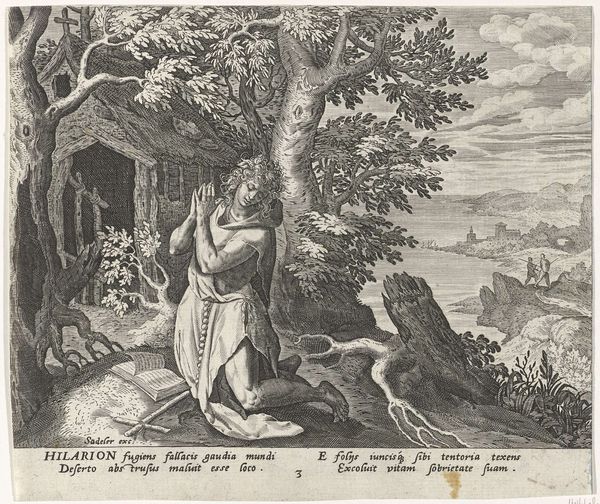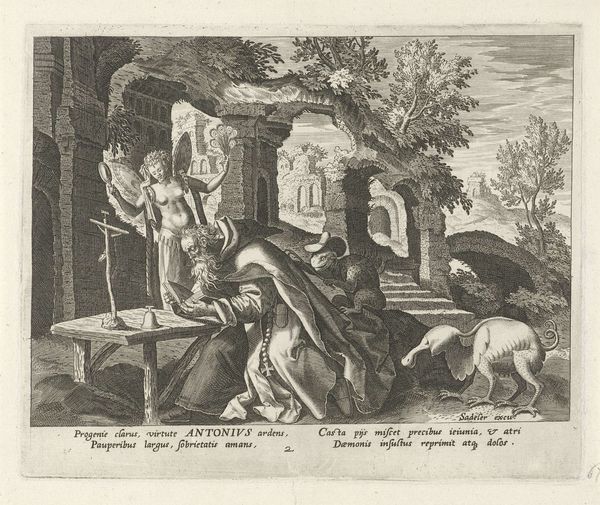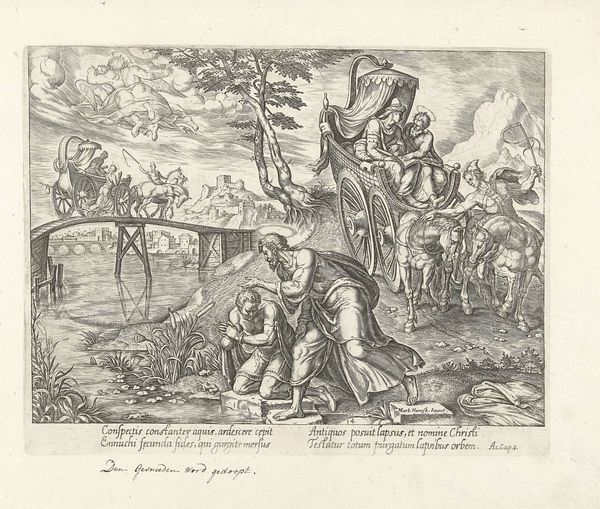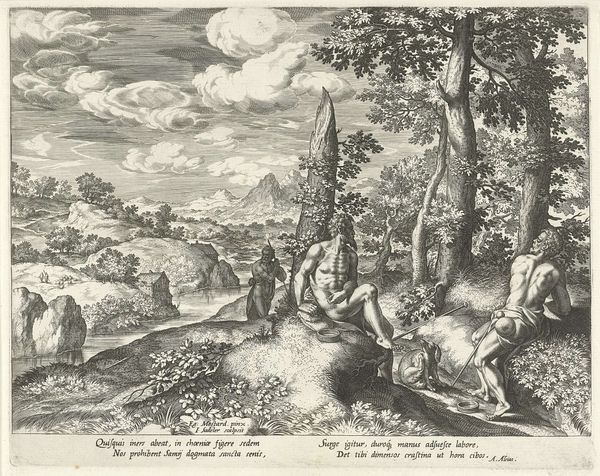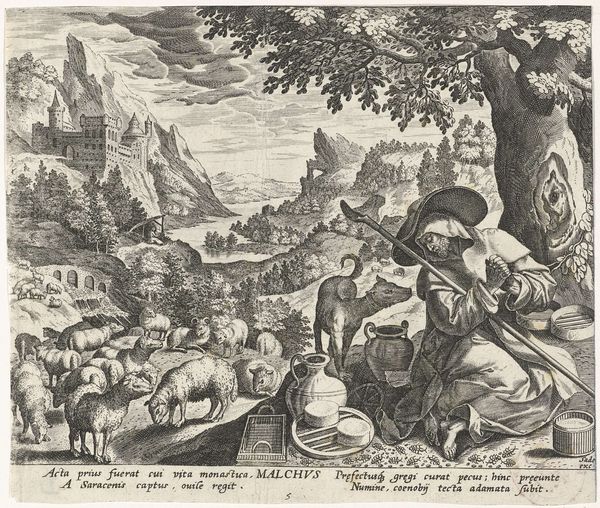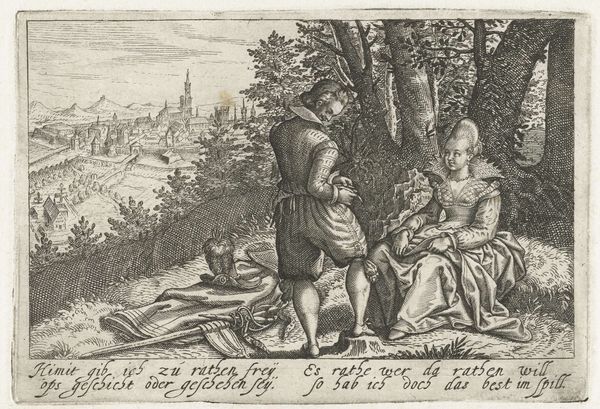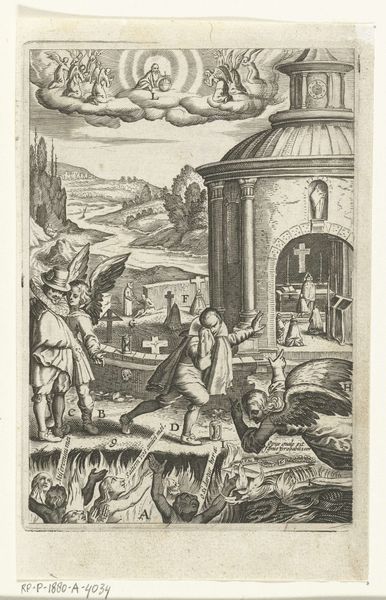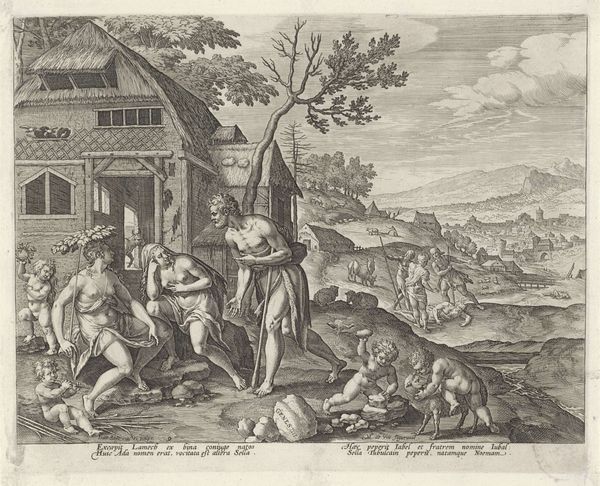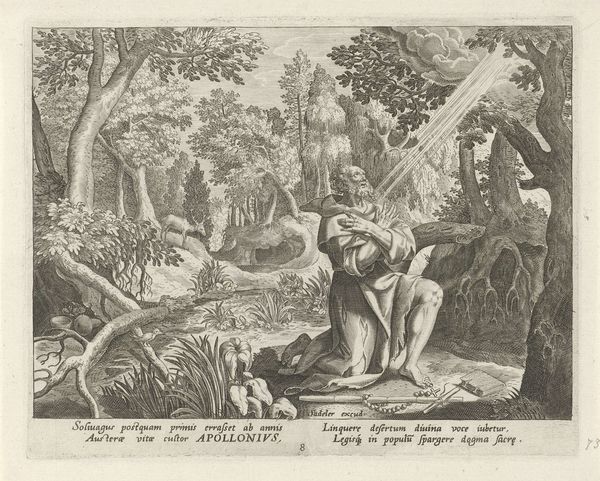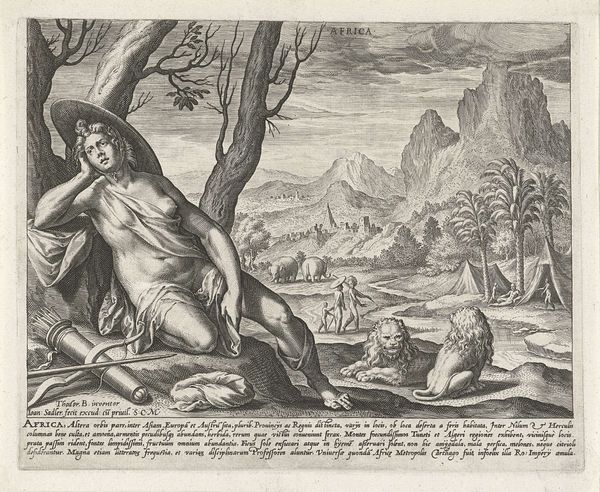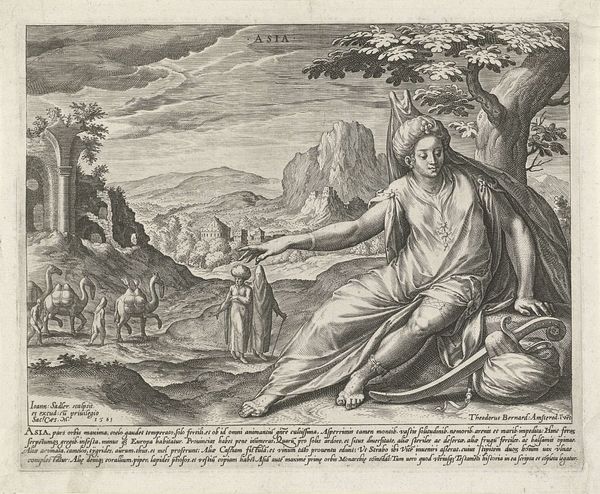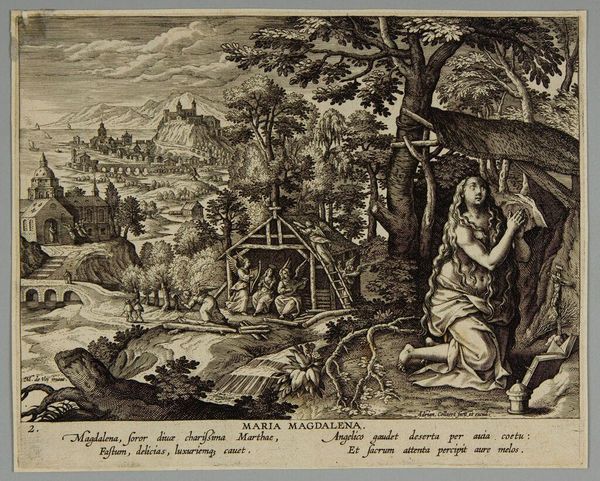
drawing, print, ink, engraving
#
drawing
#
narrative-art
#
pen drawing
# print
#
pen illustration
#
old engraving style
#
landscape
#
figuration
#
11_renaissance
#
ink
#
line
#
genre-painting
#
northern-renaissance
#
engraving
Dimensions: height 165 mm, width 204 mm
Copyright: Rijks Museum: Open Domain
Curator: Here we have "Copres van Egypte als kluizenaar," which translates to "Copres of Egypt as a Hermit," an engraving made before 1600 by Johann Sadeler I. It resides here at the Rijksmuseum. What’s your initial take? Editor: My first impression is one of serene labor. Despite being an engraving, it feels lush, teeming with quiet energy. The contrast between the meticulous detail in the foreground and the vast landscape behind really captures my attention. Curator: Yes, the symbolism is rich. Copres was an early Christian hermit known for his agricultural skill. The image blends the monastic ideal of withdrawal with the dignity of manual labor, very much a Northern Renaissance theme. We can see the detailed vegetable harvests he’s yielded surrounding him, emphasizing how spiritual nourishment and the physical bounty from nature coexist harmoniously. Editor: It's interesting how he is surrounded by abundance, almost overflowing with life, while appearing deeply introspective. He has his farming tool resting on his shoulder but absorbed in study of a book. It’s like a visual poem about finding contemplation within creation. It challenges the viewer—at least it does for me—to think about what constitutes meaningful existence. Curator: Exactly! And observe the building in the background. Is it a monastery or a hermitage? Notice the presence of people within its confines, perhaps suggesting Copres isn’t completely isolated but rather part of a smaller, devoted community. Also, consider that images like these circulated as prints. Their didactic nature instilled piety, demonstrating to their owners a moral life dedicated to God. Editor: I can see the didactic element for sure, but for me, it feels like something deeper than a straightforward moral lesson. There's a melancholic beauty here. It’s that feeling of finding your place in the cosmos, and in oneself, through purposeful activity and contemplation, which is not that far removed from Romanticism or even Existentialism. Curator: Perhaps. It definitely presents complex relationships of faith, action, and internal reflection, and to this day it carries layers of meaning depending on the interpreter. Editor: Absolutely, that combination of rich symbolic language, intimate scale, and reflective subject matter resonates far beyond the boundaries of its original context. It’s about our continuous pursuit of significance.
Comments
No comments
Be the first to comment and join the conversation on the ultimate creative platform.
